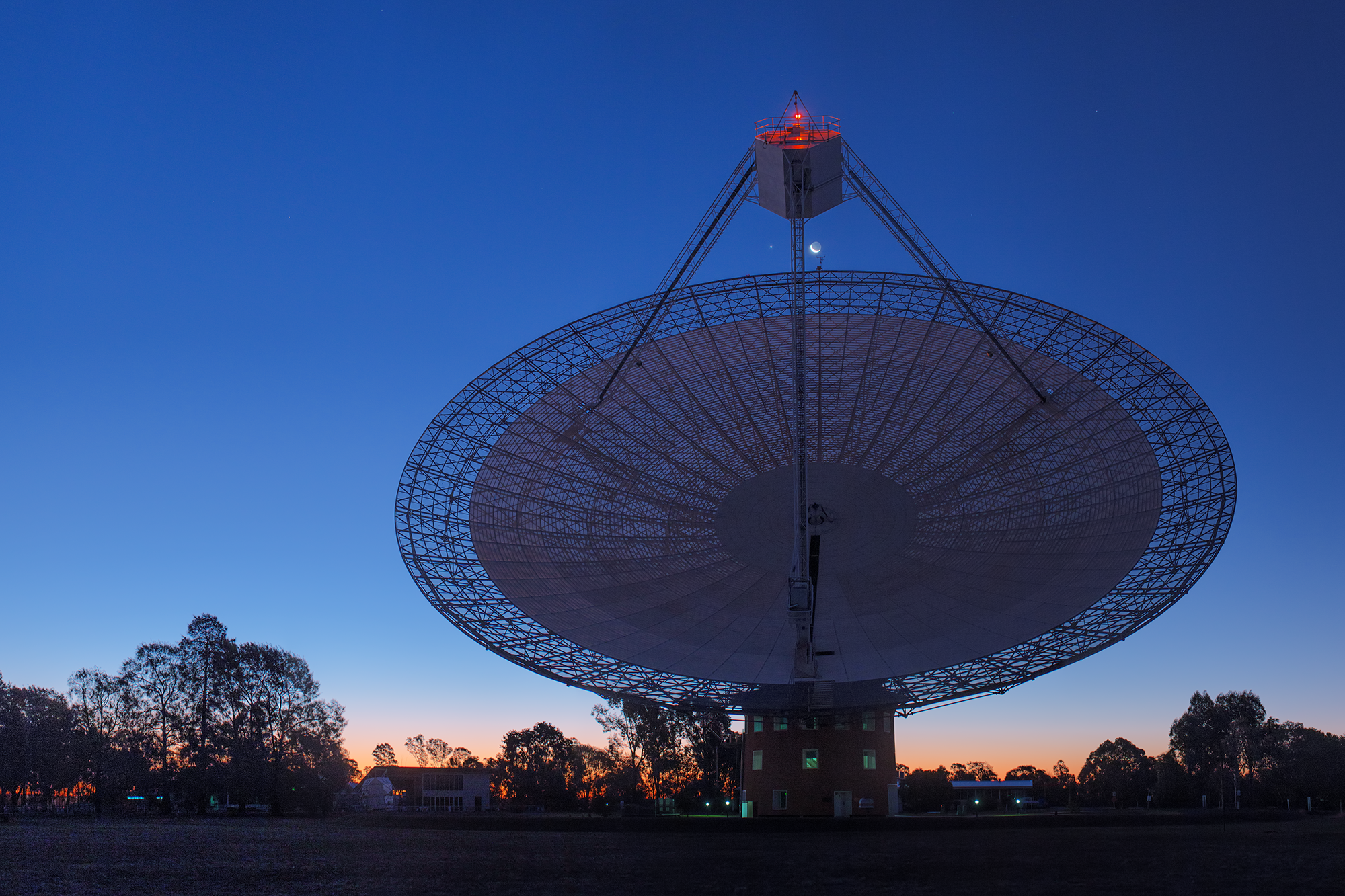Media release
From:
An international team of researchers has revealed new evidence on the nature of mysterious fast radio bursts (FRBs) – objects in space that produce brief, intense flashes of radio waves from distant galaxies.
Leading astronomers from Western Sydney University and CSIRO, Australia’s national science agency, contributed to the study which shows, for the first time, a reversible magnetic field around an FRB.
Published today in the prestigious Science journal are observations of a repeating FRB, dubbed ‘20190520B’, made over a 17-month period using CSIRO’s Parkes radio telescope, Murriyang and its ultra-wideband receiver, and the Green Bank Telescope in the US.
The study found FRB 20190520B is surrounded by dense plasma that is not only highly magnetised but also highly turbulent, with the direction of the magnetic field changing twice during this period – a phenomenon never observed before.
Dr Shi Dai, lead co-author and ARC DECRA Fellow from Western Sydney University’s School of Science, said the findings bring us closer to solving the enigma of FRBs and help us to uncover new insights into some of the most extreme environments in the Universe.
First discovered in 2007 by astronomers using the Parkes telescope, FRBs have since become one of the most active areas of research in modern astrophysics. However, despite extensive efforts, scientists are still uncertain about their exact origin.
“We know that FRBs originate from sources in distant galaxies. This makes FRBs unique tools to probe a range of astrophysics, such as “missing” matter in between galaxies, the expansion of the Universe, and astrophysics in dense and highly magnetised environments,” said Dr Dai.
“FRB 20190520B is one of a rare class of FRBs found to repeat. FRB 20190520B, first discovered by the FAST telescope in a survey led by Dr Di Li, is not only active but more importantly can be detected over a wide radio frequency window, which enables us to use the most advanced radio instruments, such as Parkes and its ultra-wideband receiver, to carry out detailed studies.”
Over the course of the study, the research team detected more than 100 bursts from FRB 20190520B, and successfully detected polarised emission in 13 bursts. Significantly, these polarised bursts revealed the direction of a magnetic field around the source of FRB 20190520B changed twice during this short period of time.
Co-author Professor Miroslav Filipovic from the School of Science explained that the research team’s interpretation of the finding is connected to changes in the parallel component of the integrated magnetic field along the line-of-sight, including reversals.
“The change of the direction of the magnetic field put some strong constraints on the origin of this FRB. It requires that the source of FRB is moving relative to a large-scale magnetic field,” said Professor Filipovic.
“One of the possibilities that we proposed is that the FRB source is a binary system with a star, which has strong stellar wind with a strong magnetic field. As the FRB source orbits the star, it moves in and out from the wind, which can explain our observations.”
Co-author Dr George Hobbs from CSIRO said its radio telescopes are particularly well-suited to the job of helping to uncover the cause of these mysterious fast radio bursts.
“We’ve been fascinated by studying fast radio bursts ever since astronomers found the first one using our Parkes radio telescope, Murriyang,” Dr Hobbs said.
“Where our ASKAP radio telescope can pinpoint where radio bursts come from, helping us to study their host galaxies, the ultra-wideband receiver on our Parkes telescope is a marvel of modern technology, allowing us to capture a massive range of frequencies, making it an incredibly versatile and powerful tool.
“In the case of FRB 20190520B, the high sensitivity of the ultra-wideband receiver helped astronomers observe the object at a much higher frequency and collect large amounts of data. The fast radio burst’s tumultuous magnetic field was only seen at the very high frequencies above 3000 MHz that the Parkes radio telescope, Murriyang, was uniquely suited to detect,” he said.
The researchers are now planning to conduct further observations of the FRB utilising Parkes and other instruments to better understand the object’s nature.
“The binary-system model for FRBs can be tested with future observations since we expect the observational features to repeat periodically if the source really is in a binary system. Our work delivered one of the clearest pictures of the source of fast radio bursts, which will have profound implications on our understanding of FRBs and their origin,” added Dr Dai.
ENDS.



 Australia; International; NSW; ACT
Australia; International; NSW; ACT


